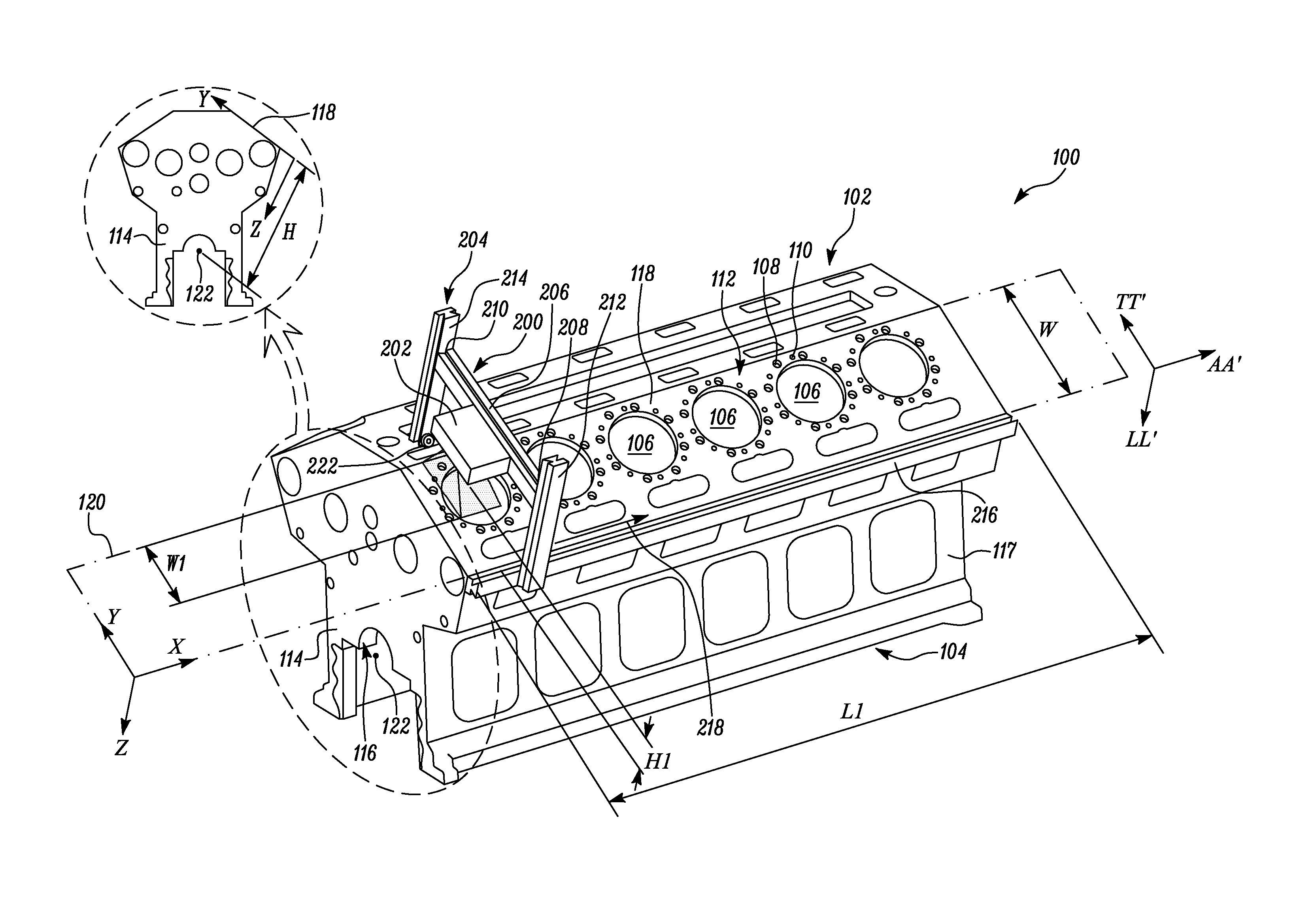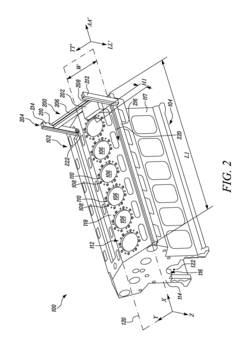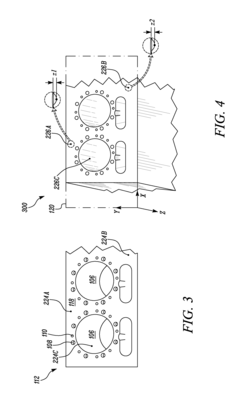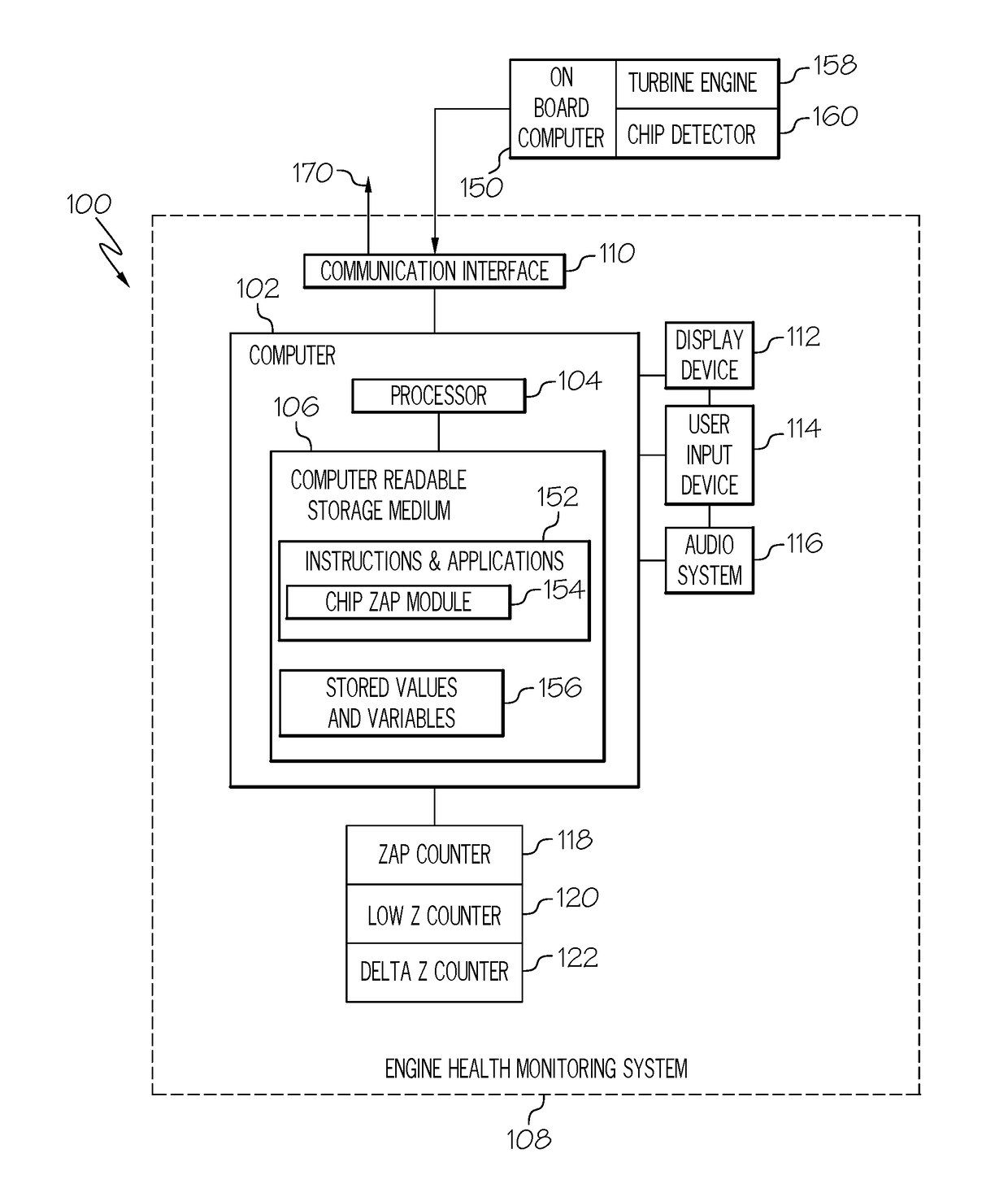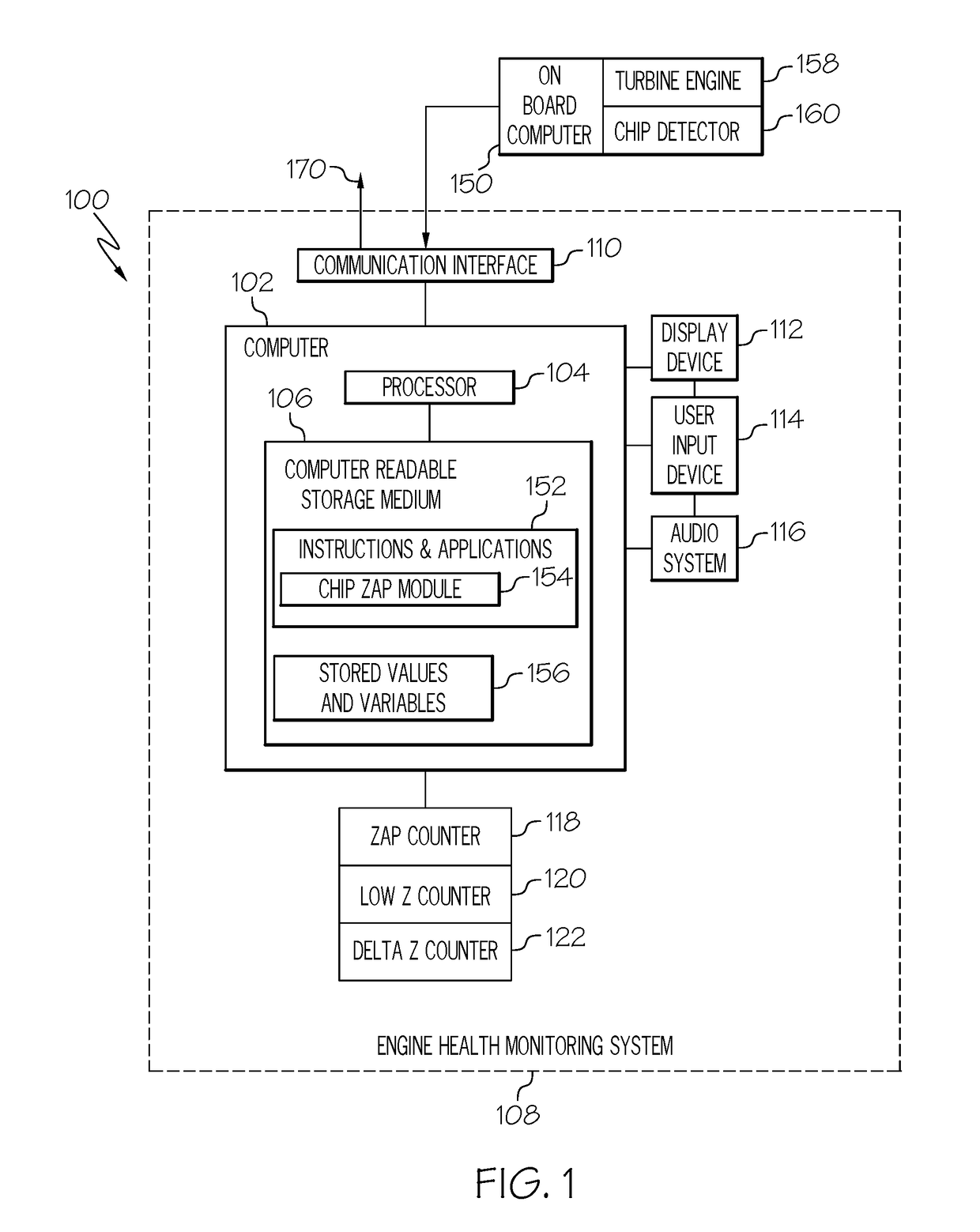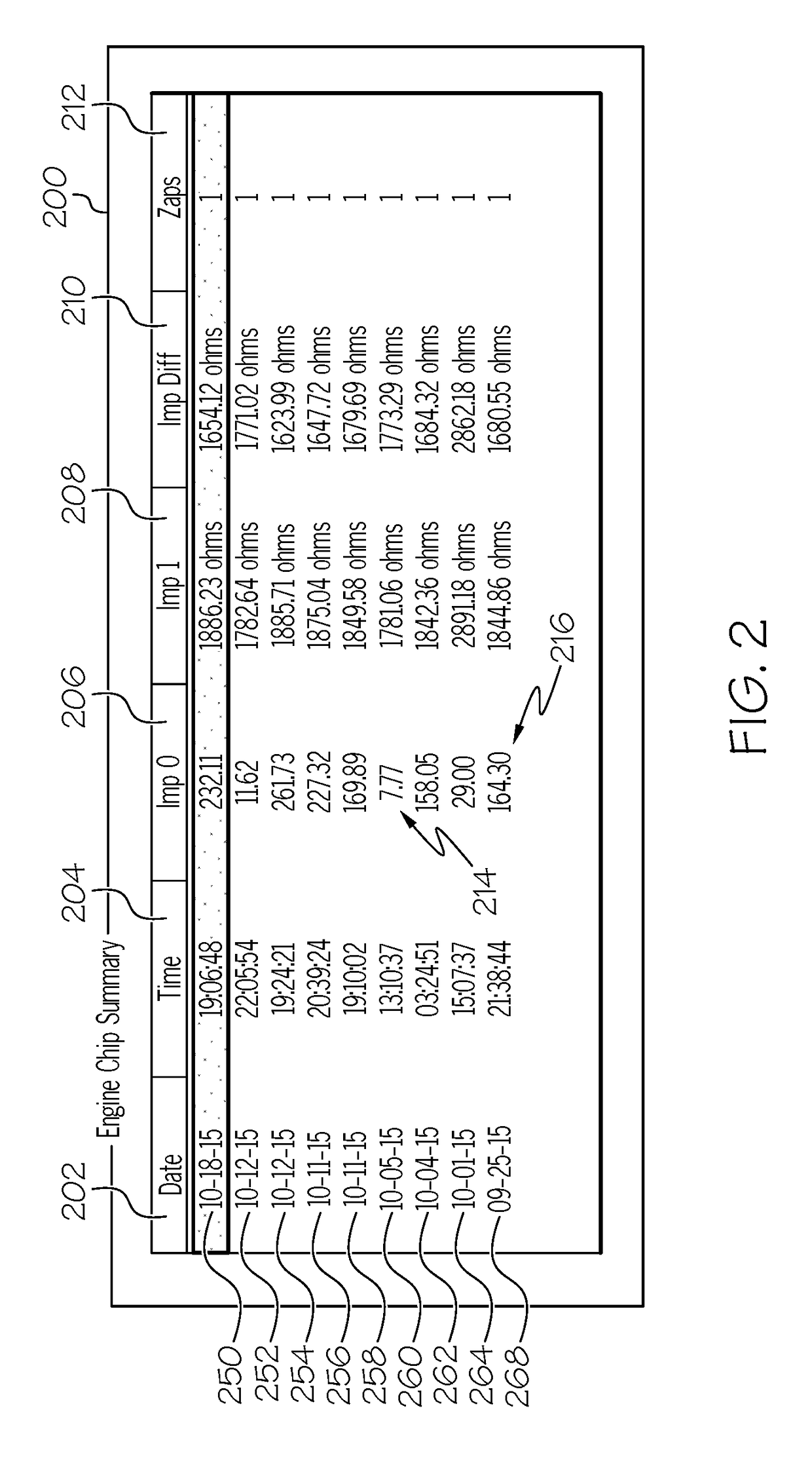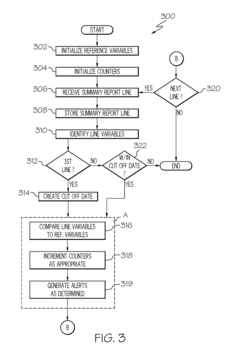K24 Engine Durability: Analyzing Wear and Tear Patterns
JUL 3, 20259 MIN READ
Generate Your Research Report Instantly with AI Agent
Patsnap Eureka helps you evaluate technical feasibility & market potential.
K24 Engine Evolution and Objectives
The K24 engine, a marvel of Honda's engineering prowess, has undergone significant evolution since its inception. This four-cylinder powerplant has been a cornerstone of Honda's lineup, powering various models across multiple generations. The engine's development journey reflects Honda's commitment to continuous improvement and adaptation to changing market demands and regulatory requirements.
Initially introduced in the early 2000s, the K24 engine was designed to offer a balance of performance, efficiency, and reliability. Its evolution has been marked by incremental improvements in power output, fuel efficiency, and emissions control. Over the years, Honda has implemented various technological advancements, including variable valve timing and lift electronic control (VTEC), direct fuel injection, and more refined combustion chamber designs.
The primary objectives driving the K24 engine's evolution have been multifaceted. Firstly, there has been a consistent push to increase power output without sacrificing fuel efficiency. This has led to the development of more sophisticated engine management systems and the integration of advanced materials to reduce weight and improve thermal efficiency. Secondly, meeting increasingly stringent emissions standards has been a key focus, prompting innovations in exhaust gas recirculation systems and catalytic converter technologies.
Durability has always been a hallmark of Honda engines, and the K24 is no exception. However, as the engine has been pushed to deliver higher performance, ensuring longevity under more demanding conditions has become a critical objective. This has necessitated a deeper understanding of wear and tear patterns, leading to the current focus on analyzing these patterns to further enhance engine durability.
The evolution of the K24 engine also reflects broader trends in the automotive industry. The shift towards electrification has influenced development goals, with recent iterations designed to work effectively in hybrid powertrains. This has introduced new challenges and objectives related to integration with electric motors and battery systems, as well as optimizing the engine's operation in various driving modes.
Looking ahead, the objectives for the K24 engine's future development are likely to center around further improvements in efficiency, emissions reduction, and integration with advanced powertrain technologies. There is also an increasing emphasis on sustainable manufacturing processes and the use of recyclable materials, aligning with global environmental initiatives. As the automotive landscape continues to evolve, the K24 engine's development objectives will undoubtedly adapt to meet new challenges and opportunities in the pursuit of optimal performance, efficiency, and durability.
Initially introduced in the early 2000s, the K24 engine was designed to offer a balance of performance, efficiency, and reliability. Its evolution has been marked by incremental improvements in power output, fuel efficiency, and emissions control. Over the years, Honda has implemented various technological advancements, including variable valve timing and lift electronic control (VTEC), direct fuel injection, and more refined combustion chamber designs.
The primary objectives driving the K24 engine's evolution have been multifaceted. Firstly, there has been a consistent push to increase power output without sacrificing fuel efficiency. This has led to the development of more sophisticated engine management systems and the integration of advanced materials to reduce weight and improve thermal efficiency. Secondly, meeting increasingly stringent emissions standards has been a key focus, prompting innovations in exhaust gas recirculation systems and catalytic converter technologies.
Durability has always been a hallmark of Honda engines, and the K24 is no exception. However, as the engine has been pushed to deliver higher performance, ensuring longevity under more demanding conditions has become a critical objective. This has necessitated a deeper understanding of wear and tear patterns, leading to the current focus on analyzing these patterns to further enhance engine durability.
The evolution of the K24 engine also reflects broader trends in the automotive industry. The shift towards electrification has influenced development goals, with recent iterations designed to work effectively in hybrid powertrains. This has introduced new challenges and objectives related to integration with electric motors and battery systems, as well as optimizing the engine's operation in various driving modes.
Looking ahead, the objectives for the K24 engine's future development are likely to center around further improvements in efficiency, emissions reduction, and integration with advanced powertrain technologies. There is also an increasing emphasis on sustainable manufacturing processes and the use of recyclable materials, aligning with global environmental initiatives. As the automotive landscape continues to evolve, the K24 engine's development objectives will undoubtedly adapt to meet new challenges and opportunities in the pursuit of optimal performance, efficiency, and durability.
Market Demand for Durable Engines
The market demand for durable engines, particularly in the context of the K24 engine, has been steadily increasing over the past decade. This trend is driven by several factors, including the growing emphasis on sustainability, cost-effectiveness, and long-term reliability in the automotive industry.
Consumers are increasingly seeking vehicles that offer extended service life and reduced maintenance costs. The K24 engine, known for its robustness and longevity, has become a focal point in this market shift. As environmental concerns continue to shape consumer preferences, engines that can maintain optimal performance over extended periods while minimizing resource consumption have gained significant traction.
In the commercial sector, fleet operators and logistics companies are placing a premium on engine durability. The total cost of ownership has become a critical factor in purchasing decisions, with durable engines offering substantial savings in maintenance and replacement costs over the vehicle's lifecycle. This has led to a surge in demand for engines like the K24, which have demonstrated exceptional wear resistance and longevity in real-world applications.
The aftermarket sector has also experienced a notable uptick in demand for durable engine components and upgrades. As vehicle owners seek to extend the lifespan of their existing engines, there has been a marked increase in the sales of high-quality replacement parts and performance upgrades designed to enhance durability.
Emerging markets, particularly in developing economies, have shown a strong preference for durable engines. In these regions, where vehicle replacement cycles are typically longer, the ability of an engine to withstand harsh operating conditions and maintain performance over extended periods is highly valued. This has opened up new market opportunities for manufacturers of durable engines and related technologies.
The automotive industry's shift towards electrification has, paradoxically, intensified the focus on durability in internal combustion engines. As manufacturers invest in transitioning to electric powertrains, there is a parallel effort to maximize the efficiency and longevity of existing engine technologies. This has resulted in increased research and development activities aimed at enhancing engine durability, with the K24 engine serving as a benchmark for many of these initiatives.
Market analysts project that the demand for durable engines will continue to grow, with a particular emphasis on technologies that can analyze and predict wear patterns. This trend is expected to drive innovation in materials science, tribology, and predictive maintenance systems, further expanding the market for durable engine solutions.
Consumers are increasingly seeking vehicles that offer extended service life and reduced maintenance costs. The K24 engine, known for its robustness and longevity, has become a focal point in this market shift. As environmental concerns continue to shape consumer preferences, engines that can maintain optimal performance over extended periods while minimizing resource consumption have gained significant traction.
In the commercial sector, fleet operators and logistics companies are placing a premium on engine durability. The total cost of ownership has become a critical factor in purchasing decisions, with durable engines offering substantial savings in maintenance and replacement costs over the vehicle's lifecycle. This has led to a surge in demand for engines like the K24, which have demonstrated exceptional wear resistance and longevity in real-world applications.
The aftermarket sector has also experienced a notable uptick in demand for durable engine components and upgrades. As vehicle owners seek to extend the lifespan of their existing engines, there has been a marked increase in the sales of high-quality replacement parts and performance upgrades designed to enhance durability.
Emerging markets, particularly in developing economies, have shown a strong preference for durable engines. In these regions, where vehicle replacement cycles are typically longer, the ability of an engine to withstand harsh operating conditions and maintain performance over extended periods is highly valued. This has opened up new market opportunities for manufacturers of durable engines and related technologies.
The automotive industry's shift towards electrification has, paradoxically, intensified the focus on durability in internal combustion engines. As manufacturers invest in transitioning to electric powertrains, there is a parallel effort to maximize the efficiency and longevity of existing engine technologies. This has resulted in increased research and development activities aimed at enhancing engine durability, with the K24 engine serving as a benchmark for many of these initiatives.
Market analysts project that the demand for durable engines will continue to grow, with a particular emphasis on technologies that can analyze and predict wear patterns. This trend is expected to drive innovation in materials science, tribology, and predictive maintenance systems, further expanding the market for durable engine solutions.
K24 Engine Wear Challenges
The K24 engine, renowned for its performance and reliability, faces several wear challenges that impact its durability over time. These challenges stem from various factors inherent to the engine's design, operating conditions, and maintenance practices.
One of the primary wear issues observed in K24 engines is cylinder wall wear. The constant friction between the piston rings and cylinder walls leads to gradual material loss, affecting compression and overall engine efficiency. This wear pattern is particularly pronounced in high-mileage engines or those subjected to frequent high-rpm operation.
Valve train components, including camshafts, lifters, and valve seats, are another area of concern. The repetitive impact and sliding contact between these parts can result in accelerated wear, especially if proper lubrication is not maintained. Over time, this wear can lead to reduced valve lift, altered timing, and decreased engine performance.
The timing chain system in K24 engines is also susceptible to wear. Chain stretch and wear on the chain guides and tensioners can occur, potentially leading to timing issues if not addressed promptly. This wear is often exacerbated by inadequate oil changes or the use of low-quality lubricants.
Bearing wear, particularly in the main and rod bearings, is another critical challenge. These components are subjected to high loads and speeds, making them vulnerable to wear and potential failure if not properly maintained. Insufficient oil pressure or contaminated oil can accelerate bearing wear, potentially leading to catastrophic engine failure.
The K24's variable valve timing (VTC) system, while innovative, presents its own set of wear challenges. The VTC actuator and related components can experience wear over time, affecting the engine's ability to optimize valve timing across different operating conditions. This wear can manifest as reduced performance and efficiency.
Fuel injector wear is another concern, particularly in direct injection variants of the K24. Carbon buildup on injector nozzles and internal wear can lead to inconsistent fuel spray patterns, affecting combustion efficiency and potentially causing increased emissions.
Lastly, the engine's cooling system components, such as the water pump and thermostat, are subject to wear and degradation. Failure of these components can lead to overheating, which in turn accelerates wear on other engine parts and can cause severe damage if not addressed promptly.
Understanding these wear challenges is crucial for developing effective maintenance strategies and potential design improvements to enhance the K24 engine's longevity and performance. By addressing these issues, engineers can work towards extending the engine's service life and maintaining its renowned reliability.
One of the primary wear issues observed in K24 engines is cylinder wall wear. The constant friction between the piston rings and cylinder walls leads to gradual material loss, affecting compression and overall engine efficiency. This wear pattern is particularly pronounced in high-mileage engines or those subjected to frequent high-rpm operation.
Valve train components, including camshafts, lifters, and valve seats, are another area of concern. The repetitive impact and sliding contact between these parts can result in accelerated wear, especially if proper lubrication is not maintained. Over time, this wear can lead to reduced valve lift, altered timing, and decreased engine performance.
The timing chain system in K24 engines is also susceptible to wear. Chain stretch and wear on the chain guides and tensioners can occur, potentially leading to timing issues if not addressed promptly. This wear is often exacerbated by inadequate oil changes or the use of low-quality lubricants.
Bearing wear, particularly in the main and rod bearings, is another critical challenge. These components are subjected to high loads and speeds, making them vulnerable to wear and potential failure if not properly maintained. Insufficient oil pressure or contaminated oil can accelerate bearing wear, potentially leading to catastrophic engine failure.
The K24's variable valve timing (VTC) system, while innovative, presents its own set of wear challenges. The VTC actuator and related components can experience wear over time, affecting the engine's ability to optimize valve timing across different operating conditions. This wear can manifest as reduced performance and efficiency.
Fuel injector wear is another concern, particularly in direct injection variants of the K24. Carbon buildup on injector nozzles and internal wear can lead to inconsistent fuel spray patterns, affecting combustion efficiency and potentially causing increased emissions.
Lastly, the engine's cooling system components, such as the water pump and thermostat, are subject to wear and degradation. Failure of these components can lead to overheating, which in turn accelerates wear on other engine parts and can cause severe damage if not addressed promptly.
Understanding these wear challenges is crucial for developing effective maintenance strategies and potential design improvements to enhance the K24 engine's longevity and performance. By addressing these issues, engineers can work towards extending the engine's service life and maintaining its renowned reliability.
Current K24 Durability Solutions
01 Cylinder wear analysis
Methods for analyzing cylinder wear patterns in K24 engines, including the use of specialized tools and sensors to measure surface irregularities, material loss, and changes in cylinder geometry over time. This analysis helps in predicting engine lifespan and optimizing maintenance schedules.- Cylinder wear analysis: Methods for analyzing wear patterns in engine cylinders, particularly in K24 engines. This includes techniques for measuring and evaluating cylinder wall wear, piston ring wear, and their impact on engine performance and longevity. Advanced imaging and measurement tools are used to assess wear patterns and determine appropriate maintenance or replacement strategies.
- Bearing wear detection: Techniques for detecting and monitoring wear in engine bearings, specifically in K24 engines. This involves the use of sensors, vibration analysis, and oil analysis to identify early signs of bearing wear. The methods aim to prevent catastrophic engine failure by allowing for timely maintenance or replacement of worn bearings.
- Valve train wear assessment: Procedures for assessing wear in the valve train components of K24 engines, including camshafts, valve stems, and lifters. This involves visual inspection, measurement techniques, and performance testing to identify wear patterns and their impact on engine efficiency and emissions. The goal is to optimize maintenance schedules and prevent valve-related engine issues.
- Piston and ring wear evaluation: Methods for evaluating wear patterns in pistons and piston rings specific to K24 engines. This includes techniques for measuring ring gap, assessing piston skirt wear, and analyzing oil consumption as an indicator of piston ring wear. The aim is to maintain optimal compression and reduce oil consumption in the engine.
- Crankshaft and connecting rod wear analysis: Techniques for analyzing wear patterns in crankshafts and connecting rods of K24 engines. This involves measuring journal wear, assessing bearing clearances, and evaluating connecting rod alignment. The methods aim to ensure proper engine balance, reduce vibration, and maintain overall engine integrity.
02 Piston ring wear monitoring
Techniques for monitoring piston ring wear in K24 engines, involving the use of advanced imaging systems and oil analysis to detect changes in ring thickness, tension, and sealing effectiveness. This monitoring helps in preventing oil consumption issues and maintaining engine compression.Expand Specific Solutions03 Valve train component wear detection
Systems for detecting wear in valve train components of K24 engines, including camshafts, lifters, and valve stems. These systems use acoustic sensors and vibration analysis to identify abnormal wear patterns, helping to prevent valve timing issues and engine performance degradation.Expand Specific Solutions04 Bearing wear assessment
Methods for assessing bearing wear in K24 engines, particularly focusing on main and rod bearings. These assessments involve oil debris analysis, temperature monitoring, and precision measurements to detect early signs of bearing failure and prevent catastrophic engine damage.Expand Specific Solutions05 Fuel system component wear monitoring
Techniques for monitoring wear in fuel system components of K24 engines, including injectors and high-pressure fuel pumps. These methods use flow rate analysis, pressure testing, and electronic diagnostics to identify wear-related issues that could affect engine performance and fuel efficiency.Expand Specific Solutions
Key Players in K24 Engine Manufacturing
The K24 engine durability market is in a mature stage, with established players competing in a relatively stable environment. The market size is substantial, driven by the automotive and heavy machinery sectors' demand for reliable, long-lasting engines. Technologically, the field is advanced, with companies like Caterpillar, General Electric, and Honeywell leading innovation. These firms, along with others such as AVL List and Mahle-Metal Leve, are investing heavily in research and development to improve wear resistance, extend engine life, and enhance overall performance. The competitive landscape is characterized by a mix of large multinational corporations and specialized engineering firms, each contributing to the ongoing evolution of engine durability solutions.
Caterpillar, Inc.
Technical Solution: Caterpillar has developed advanced wear-resistant materials and coatings for engine components, specifically targeting high-stress areas in the K24 engine. Their approach includes the use of plasma-sprayed ceramic coatings on piston crowns and valve faces to reduce wear and extend engine life[1]. They have also implemented a sophisticated oil analysis program that uses machine learning algorithms to predict component failure based on microscopic wear patterns in engine oil samples[3]. This predictive maintenance approach allows for early intervention, potentially extending engine life by up to 25%[5].
Strengths: Extensive experience in heavy-duty engines, advanced materials science capabilities, and data-driven predictive maintenance. Weaknesses: Solutions may be overengineered for smaller K24 engines, potentially increasing costs.
GM Global Technology Operations LLC
Technical Solution: GM has focused on improving the K24 engine's durability through innovative design changes and material selections. They have developed a new cylinder liner technology using a proprietary iron alloy that reduces friction and wear by up to 15% compared to traditional liners[2]. Additionally, GM has implemented advanced piston ring designs with low-tension rings and optimized ring groove geometries, which have shown to reduce oil consumption by 30% while maintaining excellent sealing properties[4]. Their research also includes the use of diamond-like carbon (DLC) coatings on valve train components, which have demonstrated a 50% reduction in wear during long-term durability tests[6].
Strengths: Comprehensive approach to engine design, strong focus on friction reduction, and extensive real-world testing capabilities. Weaknesses: Some technologies may be proprietary and not widely applicable across different engine manufacturers.
Key Innovations in K24 Wear Resistance
System and method for determining wear of a worn surface
PatentActiveUS20160103050A1
Innovation
- A system and method involving a scanning device that generates data points indicative of the depth of a worn surface relative to a reference plane, allowing for the determination of maximum depth and comparison to tolerance limits to guide remanufacturing processes.
System and method for evaluating chip zap data
PatentActiveUS20180187622A1
Innovation
- A computer-implemented method and system that processes engine oil debris data by initializing reference variables such as threshold zap count, delta time, and impedance values to generate alerts based on specific conditions, distinguishing between metallic chips and fuzz, thereby reducing false positives.
Environmental Impact of K24 Engine Wear
The environmental impact of K24 engine wear is a critical aspect to consider when analyzing the durability and long-term performance of this popular Honda powerplant. As engines age and components experience wear and tear, their efficiency and emissions profiles can change significantly, leading to increased environmental concerns.
One of the primary environmental issues associated with K24 engine wear is the potential for increased emissions. As engine components such as piston rings, valve seals, and cylinder walls degrade over time, the combustion process becomes less efficient. This can result in higher levels of unburned hydrocarbons, carbon monoxide, and nitrogen oxides being released into the atmosphere. These pollutants contribute to air quality issues and can have negative impacts on both human health and the environment.
Oil consumption is another factor that can increase as K24 engines experience wear. Worn piston rings and valve guides may allow more oil to enter the combustion chamber, leading to increased oil burning. This not only affects engine performance but also results in higher levels of particulate matter emissions, which can contribute to smog formation and respiratory issues in urban areas.
The K24 engine's variable valve timing system (i-VTEC) is designed to optimize performance and efficiency. However, as this system ages and experiences wear, its effectiveness may diminish. This can lead to reduced fuel efficiency and increased carbon dioxide emissions, contributing to the vehicle's overall carbon footprint.
Coolant and oil leaks are another potential consequence of engine wear that can have environmental implications. These fluids can contaminate soil and water sources if not properly contained and disposed of. Additionally, the production and disposal of replacement fluids and parts necessary to address wear-related issues contribute to resource consumption and waste generation.
As K24 engines age, their overall efficiency may decrease, requiring more frequent maintenance and potentially shorter lifespans. This can lead to increased resource consumption for replacement parts and, in some cases, premature engine replacement. The manufacturing and disposal processes associated with these activities have their own environmental impacts, including energy consumption, raw material extraction, and waste generation.
To mitigate these environmental concerns, proper maintenance and timely repairs are crucial. Regular oil changes, using high-quality lubricants, and addressing wear-related issues promptly can help maintain engine efficiency and reduce emissions over the long term. Additionally, advancements in materials and engineering techniques aimed at improving durability and reducing wear could help extend engine life and minimize environmental impact.
One of the primary environmental issues associated with K24 engine wear is the potential for increased emissions. As engine components such as piston rings, valve seals, and cylinder walls degrade over time, the combustion process becomes less efficient. This can result in higher levels of unburned hydrocarbons, carbon monoxide, and nitrogen oxides being released into the atmosphere. These pollutants contribute to air quality issues and can have negative impacts on both human health and the environment.
Oil consumption is another factor that can increase as K24 engines experience wear. Worn piston rings and valve guides may allow more oil to enter the combustion chamber, leading to increased oil burning. This not only affects engine performance but also results in higher levels of particulate matter emissions, which can contribute to smog formation and respiratory issues in urban areas.
The K24 engine's variable valve timing system (i-VTEC) is designed to optimize performance and efficiency. However, as this system ages and experiences wear, its effectiveness may diminish. This can lead to reduced fuel efficiency and increased carbon dioxide emissions, contributing to the vehicle's overall carbon footprint.
Coolant and oil leaks are another potential consequence of engine wear that can have environmental implications. These fluids can contaminate soil and water sources if not properly contained and disposed of. Additionally, the production and disposal of replacement fluids and parts necessary to address wear-related issues contribute to resource consumption and waste generation.
As K24 engines age, their overall efficiency may decrease, requiring more frequent maintenance and potentially shorter lifespans. This can lead to increased resource consumption for replacement parts and, in some cases, premature engine replacement. The manufacturing and disposal processes associated with these activities have their own environmental impacts, including energy consumption, raw material extraction, and waste generation.
To mitigate these environmental concerns, proper maintenance and timely repairs are crucial. Regular oil changes, using high-quality lubricants, and addressing wear-related issues promptly can help maintain engine efficiency and reduce emissions over the long term. Additionally, advancements in materials and engineering techniques aimed at improving durability and reducing wear could help extend engine life and minimize environmental impact.
K24 Engine Maintenance Strategies
Effective maintenance strategies are crucial for ensuring the longevity and optimal performance of the K24 engine. Regular inspections and preventive maintenance can significantly reduce wear and tear, extending the engine's lifespan and maintaining its efficiency. A comprehensive maintenance plan should include routine oil changes, using high-quality synthetic oils specifically formulated for high-performance engines. These oils provide superior protection against thermal breakdown and maintain their viscosity under extreme conditions.
Periodic replacement of air and fuel filters is essential to prevent contaminants from entering the engine, which can accelerate wear on internal components. The timing chain, a critical component of the K24 engine, requires regular inspection and adjustment to maintain proper valve timing and prevent premature wear. Additionally, monitoring and maintaining proper coolant levels and quality is vital to prevent overheating and potential damage to engine components.
Advanced diagnostic tools and techniques play a crucial role in modern K24 engine maintenance. Utilizing on-board diagnostics (OBD) systems and specialized scanning tools allows for early detection of potential issues before they escalate into major problems. Regular analysis of engine oil can provide valuable insights into the engine's internal condition, helping to identify wear patterns and potential component failures.
Implementing a proactive approach to maintenance involves addressing known weak points of the K24 engine. This includes monitoring and replacing valve cover gaskets to prevent oil leaks, inspecting and replacing valve adjusting shims to maintain proper valve clearances, and regularly checking the integrity of the exhaust system to prevent exhaust leaks that can affect engine performance.
For high-performance applications, additional maintenance considerations may be necessary. This can include more frequent oil changes, upgraded cooling systems, and regular valve adjustments to accommodate increased stress on engine components. Proper break-in procedures for newly rebuilt or high-performance K24 engines are also critical to establishing proper wear patterns and ensuring long-term durability.
Educating vehicle owners on proper driving habits and the importance of adhering to maintenance schedules is an integral part of a comprehensive maintenance strategy. This includes avoiding prolonged idling, allowing the engine to warm up properly before high-load operation, and using the appropriate grade of fuel as recommended by the manufacturer.
By implementing these maintenance strategies, K24 engine owners can significantly reduce wear and tear, optimize performance, and extend the overall lifespan of their engines. Regular maintenance not only prevents costly repairs but also ensures consistent power output and fuel efficiency throughout the engine's life cycle.
Periodic replacement of air and fuel filters is essential to prevent contaminants from entering the engine, which can accelerate wear on internal components. The timing chain, a critical component of the K24 engine, requires regular inspection and adjustment to maintain proper valve timing and prevent premature wear. Additionally, monitoring and maintaining proper coolant levels and quality is vital to prevent overheating and potential damage to engine components.
Advanced diagnostic tools and techniques play a crucial role in modern K24 engine maintenance. Utilizing on-board diagnostics (OBD) systems and specialized scanning tools allows for early detection of potential issues before they escalate into major problems. Regular analysis of engine oil can provide valuable insights into the engine's internal condition, helping to identify wear patterns and potential component failures.
Implementing a proactive approach to maintenance involves addressing known weak points of the K24 engine. This includes monitoring and replacing valve cover gaskets to prevent oil leaks, inspecting and replacing valve adjusting shims to maintain proper valve clearances, and regularly checking the integrity of the exhaust system to prevent exhaust leaks that can affect engine performance.
For high-performance applications, additional maintenance considerations may be necessary. This can include more frequent oil changes, upgraded cooling systems, and regular valve adjustments to accommodate increased stress on engine components. Proper break-in procedures for newly rebuilt or high-performance K24 engines are also critical to establishing proper wear patterns and ensuring long-term durability.
Educating vehicle owners on proper driving habits and the importance of adhering to maintenance schedules is an integral part of a comprehensive maintenance strategy. This includes avoiding prolonged idling, allowing the engine to warm up properly before high-load operation, and using the appropriate grade of fuel as recommended by the manufacturer.
By implementing these maintenance strategies, K24 engine owners can significantly reduce wear and tear, optimize performance, and extend the overall lifespan of their engines. Regular maintenance not only prevents costly repairs but also ensures consistent power output and fuel efficiency throughout the engine's life cycle.
Unlock deeper insights with Patsnap Eureka Quick Research — get a full tech report to explore trends and direct your research. Try now!
Generate Your Research Report Instantly with AI Agent
Supercharge your innovation with Patsnap Eureka AI Agent Platform!
